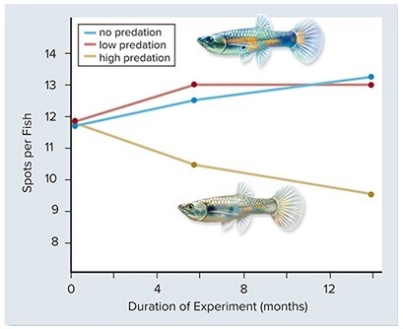Multiple Choice
 In the experiment above,guppy color patterns (spots) were measured in populations exposed to increasing amounts of predation.From this you could conclude that ________.
In the experiment above,guppy color patterns (spots) were measured in populations exposed to increasing amounts of predation.From this you could conclude that ________.
A) predators are more likely to catch and eat brightly colored guppies
B) predators are less likely to catch and eat brightly colored guppies
C) brightly colored guppies are more likely to reproduce in the presence of predators
D) predators do not affect the color patterns of guppies
E) evolutionary changes take millions of years to appear
Correct Answer:

Verified
Correct Answer:
Verified
Q31: If the frequency of an autosomal recessive
Q32: You are studying a population of geese
Q33: People homozygous for the sickle-cell anemia allele
Q34: Antigens on red blood cells are hereditary
Q35: Gene flow,defined as the movement of genes
Q38: Average human males are most likely to
Q39: During a drought on the Galapagos islands,finches
Q40: In a large population of randomly reproducing
Q41: Female cardinals select male mates in part
Q70: In the phalarope,or wadepiper bird,the male is